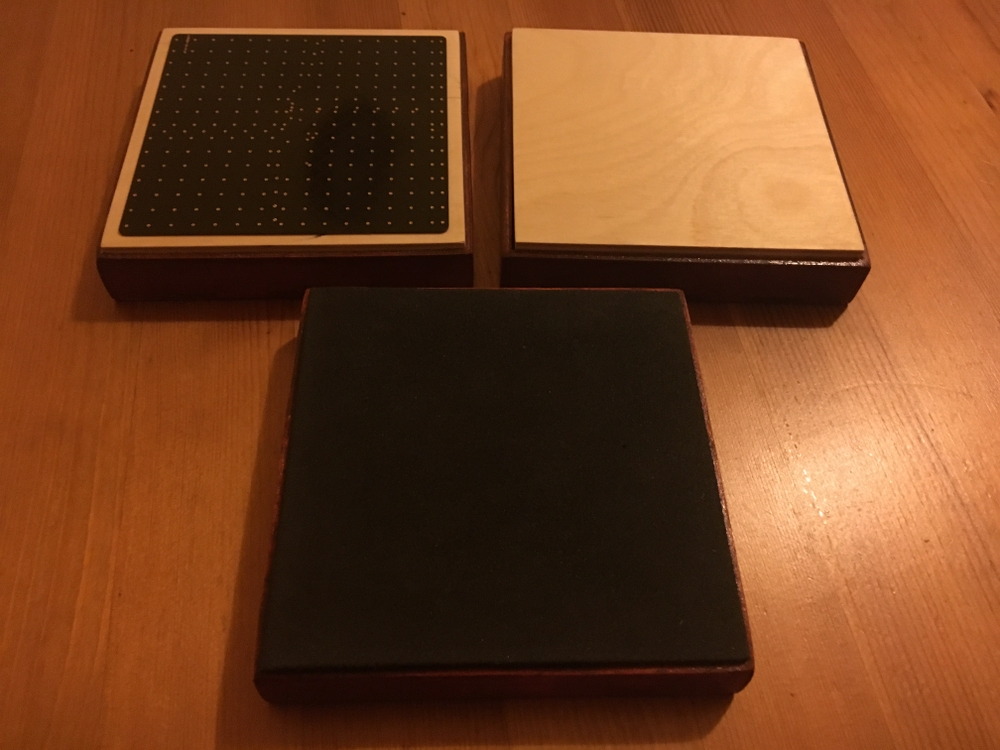Do We Speak Sensor? Cultural Constraints of Embodied Interaction 2018
ABSTRACT We explore the role of materiality in DMIs and question the influence of tacit understandings of sensor technology. We suggest that a tacit knowledge of the ‘sensor layer’ brings with it understandings and expectations that guide our approach to interaction. We argue that the influence of technology starts before a sound is made, and comes from not only intuition of material properties, but also received notions of what technology can and should do. RESULTS
Wooden Prototype: Primarily percussive in nature. Predominantly percussive sonic expectations. Rubber Prototype: More pressure based approach to interaction. Malleable nature guided sonic expectations. Sensor Prototype: Primarily pressure-less actions in 2D space. More ‘controller’ based responses, perceived as a control surface rather than an instrument.
DISCUSSION It is clear from the study that materiality plays a huge role in expectation of both gestural interaction and sonic response in DMIs. This understanding influenced not only the choice of gesture used, but assumptions of what they would sound like. The outcome of the study highlights a limitation in relation to explicit sensor technology, which we attribute to a ‘machine centered’ approach to instrumental interaction. The sensor prototype was seen as a controller and not an instrument, and promoted XY-based thinking adopted from smartphones rather than acoustic instruments.
